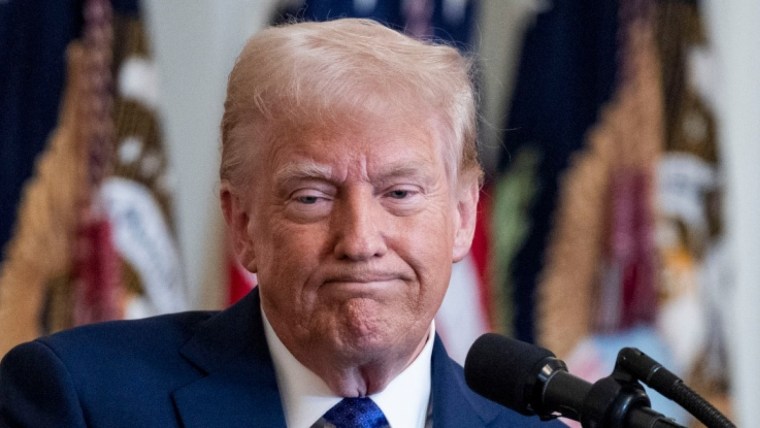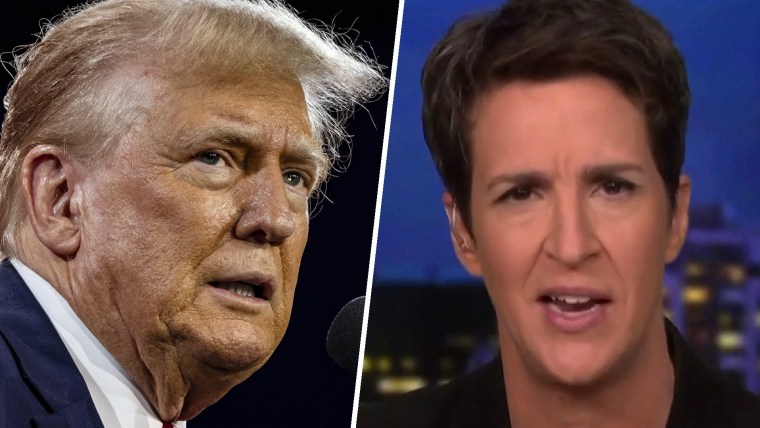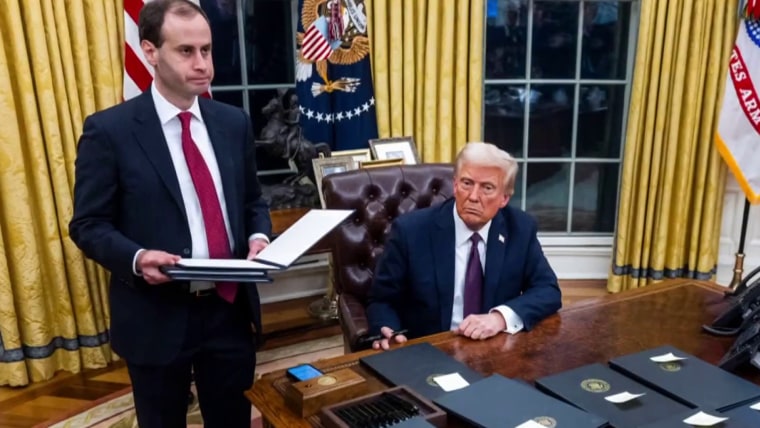In the 10 days since Donald Trump took the presidential oath of office, he has flooded the proverbial zone with executive orders and ostentatious deportation raids, as well as the firings of Justice Department prosecutors and more than a dozen inspectors general.
There have been so many outrages that it’s hard for Americans to keep track … that is until the White House Office of Management and Budget threatened to shut the federal spending spigot. That is precisely the kind of act that will get Americans to take notice of what’s happening in Washington — because if there’s one thing you can say about the American people, it’s that they love government spending.
So unsurprisingly, when the OMB released a memo calling on federal agencies to “temporarily pause all activities related to obligation or disbursement of all Federal financial assistance,” all hell broke loose.
Never mind that the president lacks the constitutional authority to avoid spending federal dollars authorized and appropriated by Congress — the OMB’s poorly worded and vague memo sowed chaos and fear across the country.
If there’s one thing you can say about the American people, it’s that they love government spending.
Would Americans dependent on SNAP benefits, the Meals for Wheels program for seniors or Head Start see their benefits cut off? When Medicaid spending portals were down in several states, it raised fears that essential health dollars could be in jeopardy. What about housing assistance, student loan disbursements and a federal program to ensure low-income Americans have access to heating oil? Nonprofit groups reliant on distributing federal dollars were suddenly faced with the prospect of cutting back services or laying off staff members.
It took the OMB all of a few hours to try and clean up the mess it created by issuing a set of FAQs that said the pause wouldn’t apply “across the board” but still left unclear what programs would be affected. Thankfully, minutes before the pause would have gone into effect, a federal judge issued a temporary injunction. By Wednesday afternoon, the OMB said it had rescinded the memo, but a follow-up post from White House press secretary Karoline Leavitt bred even more confusion.
Still the hullabaloo over the OMB’s spending pause is a good reminder that no matter how often Americans say they hate government spending ... the exact opposite is true.
For example, an AP/NORC poll from March 2023 found that 60% of adults think the government spends too much. Only 16% of Americans say it spends too little, and 22% say it spends the right amount.
But when you dig into the details, you discover Americans have astoundingly contradictory views on government spending.

The same poll found that 65% say the government doesn’t spend enough on education, 63% say the same thing about health care, 62% think the government should spend more on Social Security and infrastructure, and 59% want more money to be allocated to helping the poor.
So where do people think the government should cut back? On one issue: foreign assistance, which makes up less than 1% of the federal budget.
This isn’t a new development. For years, polls have shown that when you ask Americans about federal spending on specific policy issues, they overwhelmingly support it — and the only place where they want cuts to be made is foreign aid.
The cynic might argue that Americans support only spending that benefits them — and there most likely is some truth to that, but not as much as one might think.
According to a fascinating 2018 AP-NORC poll, Americans support more, not less, government spending on a host of issues, from obvious ones like health care, education and Social Security to less obvious picks.
On most of these issues, a majority of Americans believed we were spending ‘too little.’
Indeed, for everything from assistance to the poor, child care, solving the problems of American cities, supporting scientific research and environmental programs to developing alternative energy sources, funding parks and recreation and even improving the condition of Black Americans, only 10% or fewer of Americans thought the United States was spending “too much.” On most of these issues, a majority of Americans believed we were spending “too little.”
A more recent AP/NORC poll shows a similar result, albeit with a more significant partisan divide. For example, while 79% of Republicans want to spend more on border security, only 31% of Democrats and 48% of independents feel the same. However, a majority of Republicans say the U.S. government is spending too little on education and Medicare, and 64% believe we could spend more on Social Security. Even 46% of Republicans think the United States isn’t doing enough to fund assistance to the poor.
What is perhaps most shocking about these recent poll results is that only 34% of Americans think the United States isn’t spending enough on the military, and 19% feel that way about federal law enforcement agencies. These are two areas of the budget that are practically sacrosanct in Washington. Outside of mandatory spending on programs like Social Security, Medicare and Medicaid, as well as interest on the national debt, defense spending makes up nearly half the budget.
How does one square these numbers with poll after poll that show Americans want to cut the size of government? The reality is you can’t.

Most Americans simply have no idea what their government spends money on and have for years been convinced by politicians — from both sides of the aisle, though mostly Republicans — that the government is a cesspool of wasteful expenditures. Many believe eliminating corruption, inefficiency and red tape would dramatically cut government spending. It wouldn’t. The savings would amount to a rounding error in a budget that is trillions of dollars in size.
The issue is that every government program has a constituency of voters who rely on it, and if history has taught us anything, it’s that cutting a spending program is next to impossible. As the last week has shown, even threatening to pause federal spending is enough to freak people out.
Americans like to talk a big game about government spending and the size of government, but what they claim to hate in the abstract ... they love in reality.

